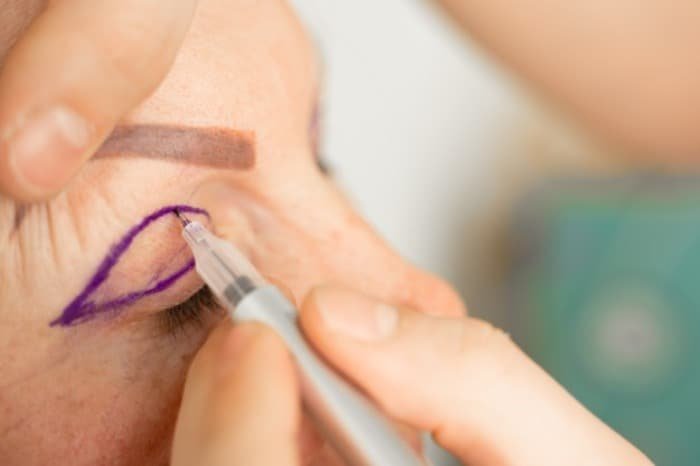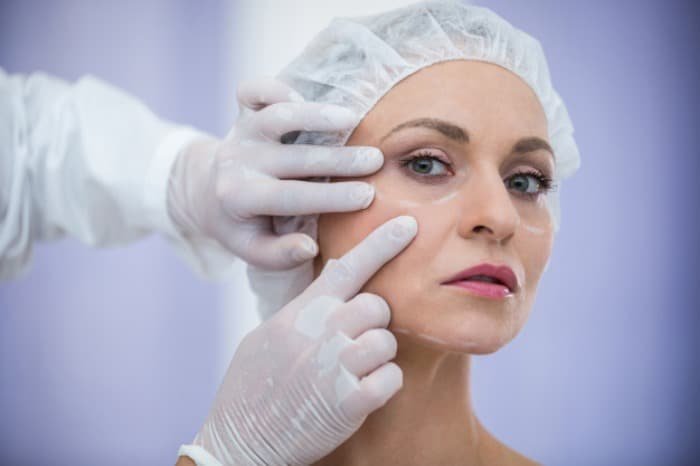Blepharoplasty of the eyelidsWhat is it?Cosmetic surgeryHow is eyelid surgery performed?
Blepharoplasty is a type of surgery thattreats drooping eyelidsDuring this surgery, some excess skin, muscle, or fat around the eyes may be removed. As you age, your eyelids stretch, and the muscles weaken, causing extra fat to build up and droop the eyelids, which may lead to a need for blepharoplasty.
This condition can make you look older, and it may alsocause sagging skinaround the eyes, which can reduce your vision, especially if the upper and outer eyelid area droops.
Blepharoplasty can help eliminate visual problems and make your eyes look younger and more alert. To assist you in deciding whether to have blepharoplasty, you can explore this section on health inSelMagz.Stay with us to learn about the risks and benefits of blepharoplasty.
Why is blepharoplasty performed?
Drooping eyelids may become so severe that it hinders your ability to fully open your eyes. In this case, removing excess tissue from the upper eyelid can improve your vision and make you look younger.
Blepharoplasty could be a suitable option if you meet the following conditions:
- Drooping in both the upper and lower eyelids
- Excess skin on the upper eyelid that obstructs your vision
- Excess skin on the lower eyelid
- Puffiness and wrinkles under the eyes
You can also combine blepharoplasty with other procedures like eyebrow lifts, facelifts, or lifting other areas of the skin. Typically, these procedures are not covered by insurance unless your vision is impaired due to drooping. However, if done solely for cosmetic reasons, you will need to pay for it entirely out of pocket.

Tips regardingeyelid surgeryor blepharoplasty
Risks of blepharoplasty include:
- Infection and bleeding
- Dryness
- Difficulty closing the eyes
- Other eyelid issues
- Eye redness
- Damage to eye muscles
- Loss of pigmentation in the area
- Need for revision surgery
- Temporary blurriness or reduced vision
- General surgery risks, such as adverse reactions to the procedure and blood clots
Before surgery, discuss the risks with your doctor and find out if this surgery is right for you.
Recovery from blepharoplasty
Most people return to their regular routine within 10 to 14 days after this surgery, as their eyelids have healed.
One way to speed up recovery is to avoid overexerting yourself with daily activities and to eat soft foods to keep your facial muscles from straining, while also paying attention to rest.

Blepharoplasty: upper and lower eyelid surgery
Who is suitable for eyelid surgery or blepharoplasty?
- Individuals over 18 years old
- Those with excess skin on the upper eyelids that affects their vision
- Persons with fat bags and puffiness in the lower eyelids, and people with skin lesions on both upper and lower eyelids.
How to prepare for and undergo blepharoplasty
Initially, the doctor will conduct a series of tests and discuss blepharoplasty and its risks. The patient must follow the doctor’s instructions carefully, and pain relief medication may be administered post-surgery.
What to expect from blepharoplasty?
Blepharoplasty is a procedure performed on the individual without affecting the inside of their body or face.
First, the surgeon injects a local anesthetic, allowing it to take effect. If both the upper and lower eyelids are involved, the doctor starts with the upper eyelid, lifting it by making an incision, removing excess skin, muscle, or fat, and then stitching the incision closed.
For the lower eyelid, a natural incision is made below the lashes, similar to the upper eyelid, where all excess materials are removed, and the incision is stitched closed. If the drooping is severe, the surgeon may also address the eyebrows. Post-surgery, you can quickly return home and manage your care.

Treating eyelid wrinkles with blepharoplasty
After blepharoplasty, you may experience the following:
- Blurriness
- Tearing
- Sensitivity to light
- Double vision
- Numb and puffy eyelids
- Swelling or bruising on the eyelids
- Pain and discomfort
Typically, the doctor will ask you to do the following after eyelid surgery:
- Use a thin ice pack and place it on the surgery site for 10 minutes, starting the day after surgery, and repeat it 4 to 5 times a day.
- Gently clean the eyelids if they become dirty, and use the drops or ointments prescribed by your doctor.
- Avoid heavy lifting and swimming for a week.
- Do not engage in excessive activities such as jumping or aerobics for a week.
- Do not smoke.
- Avoid rubbing your eyes.
- If you wear contact lenses, stop using them for two weeks after surgery and wear dark glasses to reduce light exposure.
- When sleeping, keep your head elevated so that it is higher than your chest, and apply a cool compress to reduce swelling.
- Visit your doctor after a few days for a check-up and stitch removal.
- Avoid over-the-counter medications likeaspirin, ibuprofen,naproxenand other supplement medications that may cause bleeding for a week.
If you notice the following, consult your doctor:
- Shortness of breath
- Chest pain
- Unusual rapid heartbeatSevere eye pain
- Bleeding and vision problems
- Necessary care before and after blepharoplasty

Ways to speed up recovery after eyelid surgery or blepharoplasty
Follow the doctor’s orders carefully.
Take care of yourself, such as using cold compresses, administering eye drops on time, and preventing your eyes from drying out. Try to stay indoors after the surgery.
Prioritize your eyes.
It’s best to focus only on your eyes, which may appear puffy, red, or swollen or develop dark spots. However, don’t dwell on them as they will improve after three days; just stay at home.
Avoid excessive eye activity.
During this time, refrain from reading, checking emails, and watching your favorite shows, as these activities can cause more dryness in your eyes, and be sure to use ointments and drops promptly.
Important post-surgery care tips for eyelid surgery or blepharoplasty
As mentioned earlier in this health section of SelMagz, after eyelid surgery, when you regain consciousness, you will see pads soaked with iced saline placed on your eyes to prevent swelling and bruising.
In the first hour after surgery, your vision may be blurry due to the application of eye ointment.
In the early days following eyelid surgery, your eyes may water due to swelling, which will reduce in the first week after surgery.
Post-surgery, drink plenty of fluids and walk gently and slowly.
Three days after eye surgery, the pads will be removed. This may cause slight discomfort, and taking pain medication an hour before their removal is advisable.
Twenty-four hours after the procedure, place pads soaked in ice water on your eyes, changing them every 20 to 30 minutes.
To minimize bruising, keep the pads wet as the weight of the water along with the temperature helps to minimize swelling.
Place a small bag containing
chickpeasorfrozen cornover the eye pads, but ensure that this bag does not touch your skin directly. Use a cloth or towel between the bag and your skin to prevent contact.After eye surgery, monitor the eye pads and change them regularly.
Every morning and evening, until the stitches are removed, clean the area around the stitches with a cotton ball, then apply ointment to the stitches on the eyelid and the inner part of the lid. However, at bedtime, apply the ointment only to the lower eyelid.
Applying ointment to the lower lid may cause blurriness, so it’s better to do it before sleeping. If you keep the stitches lubricated with ointment, you will experience less pain during their removal.
Blepharoplasty







